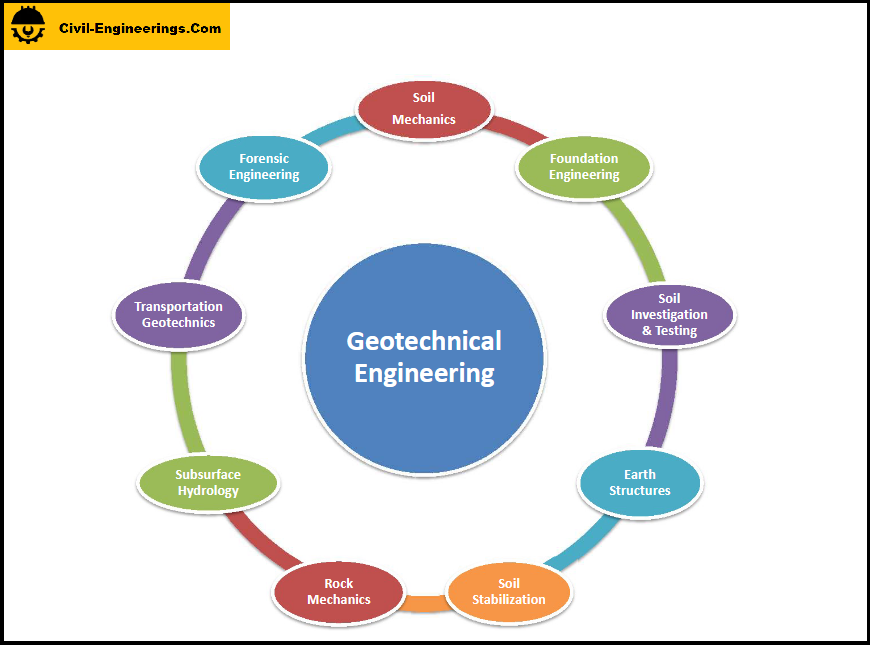Geotechnical Engineering Services South Africa Fundamentals Explained
Geotechnical Engineering Services South Africa Fundamentals Explained
Blog Article
The Best Guide To Geotechnical Engineering Services South Africa
Table of ContentsThe Best Guide To Geotechnical Engineering Services South AfricaGeotechnical Engineering Services South Africa Things To Know Before You BuyThe smart Trick of Geotechnical Engineering Services South Africa That Nobody is DiscussingThe Best Guide To Geotechnical Engineering Services South AfricaMore About Geotechnical Engineering Services South Africa
Rates of pay normally raise as your knowledge and abilities expand, with standards directing to a graduate beginning salary of in between 18,000 and 28,000 per year in the UK. This rises to 26,000 to 36,000 with a few years of experience and afterwards reaching 40,000 to 60,000+ for senior, chartered or master designers.However, with the ideal application it is feasible to understand the profession and gain entrance to a tough yet fulfilling and important job. A geologist would require to re-train to end up being a geotechnical engineer, although there is lots of cross-over between both professions, which might make this much easier. Geologists require to have an understanding of dirts, rocks and other products from a scientific point of view, while geotechnical designers story their expertise of matters such as soil and rock auto mechanic, geophysics and hydrology and apply them to engineering and ecological jobs.
When beginning out, these engineers will certainly have a tendency to work with much less complicated projects, accumulating expertise and experience all set for more challenging job later. Geotechnical engineers have a tendency to specialise in certain locations as they expand in experience, concentrating on specific frameworks such as trains, roads or water. These designers also work with renewable power, offshore and onshore oil and gas, nuclear power, and much more.
The time taken to come to be a geotechnical engineer depends on where you are based, where you research and what level of education you want to achieve prior to entering the office. Geotechnical Engineering Services South Africa. Generally-speaking it takes 3-4 years to get to the basic needs to start a career as a geotechnical designer.
What Does Geotechnical Engineering Services South Africa Do?
This write-up will certainly highlight three vital aspects that make geotechnical professionals necessary for any kind of construction task. In essence, geotechnical engineers are liable for the analysis of the ground and dirt problems in concern.
The concept is to minimize the risk of problems during and after the building process. Without these experts, specialists might guarantee that the building will not develop distress during the construction process.
Geotechnical design is a branch of civil design; nevertheless, it involves using clinical approaches and concepts to collect and interpret the physical residential properties of the ground. Geotechnical designers are entailed in all stages of the design of frameworks, from idea to building and construction. Their job is essential in the design and preparation procedure as they examine the stability of soil, clay, silt, sand, and rock, before building and construction beginning.
How Geotechnical Engineering Services South Africa can Save You Time, Stress, and Money.

Internal training and national-level qualifications are available for occupation advancement. Responsibilities include screening asphalt, concrete, and accumulation products, as well as keeping laboratory tools. This role appropriates for those with a keen rate of interest in laboratory procedures and top quality control. As the need for geotechnical design professionals proceeds to soar, now is an optimal time to take into consideration a profession visit in this dynamic area.
Quality control (QA) comes down to having a quantifiable examination result. There are numerous examinations geotechnical designers can execute that generate valid, scientific info, that forecast teams can use to make smart task choices and make certain the agreement demands are being satisfied. For instance, you can utilize a nuclear densometer to determine moisture material and density of dirt (Geotechnical Engineering Services South Africa).
Quality control (QC) involves aesthetic monitoring by the geotechnical designer. As an example, the designer would observe the compaction of the dirt to guarantee it was performed in conformity to agreement files. Monitoring of the compaction would act as the proof, instead of a test with a measurable outcome that was obtained by the nuclear densometer in the instance in the paragraph above.
Getting The Geotechnical Engineering Services South Africa To Work

Keeping that borehole, you commonly drill to a pre-determined deepness or a depth affected by come across subsurface problems that drifted from assumptions. If it is all-natural dirt through-out depth, you could think that you will additionally locate typically the very same product from within that hole in the remainder of the location you are building your structure.
Much more boreholes or other techniques of exploration/testing (i.e. test pits, geoprobes, CPTs, etc) more would aid you far better define the subsurface profile, however there is constantly an opportunity that the subsurface beyond the exploration/testing locations differs considerably from what was visually observed. Undocumented manmade fill is different than natural dirt because you most definitely never recognize what you are mosting likely to come across (e.g.
Due to the uncertainty of the undocumented fill, most projects require the elimination or renovation of the fill within the proposed structure restrictions and under other tons bearing structures. This is because the residential or commercial properties of the undocumented fill are generally extremely heterogeneous and may not be comparable as the properties encountered in the exploration/test area.
About Geotechnical Engineering Services South Africa
Geotechnical engineers can make use of a system of tools such as inclinometers, survey surveillance factors, piezometers, extensometers, or negotiation plates. For example, inclinometers may be set up behind an excavation assistance wall to gauge how much the wall moves because of excavation. Activity of the wall surface internal towards the excavation suggests that there could be a loss of ground behind the wall and therefore possibly negotiation.
Report this page